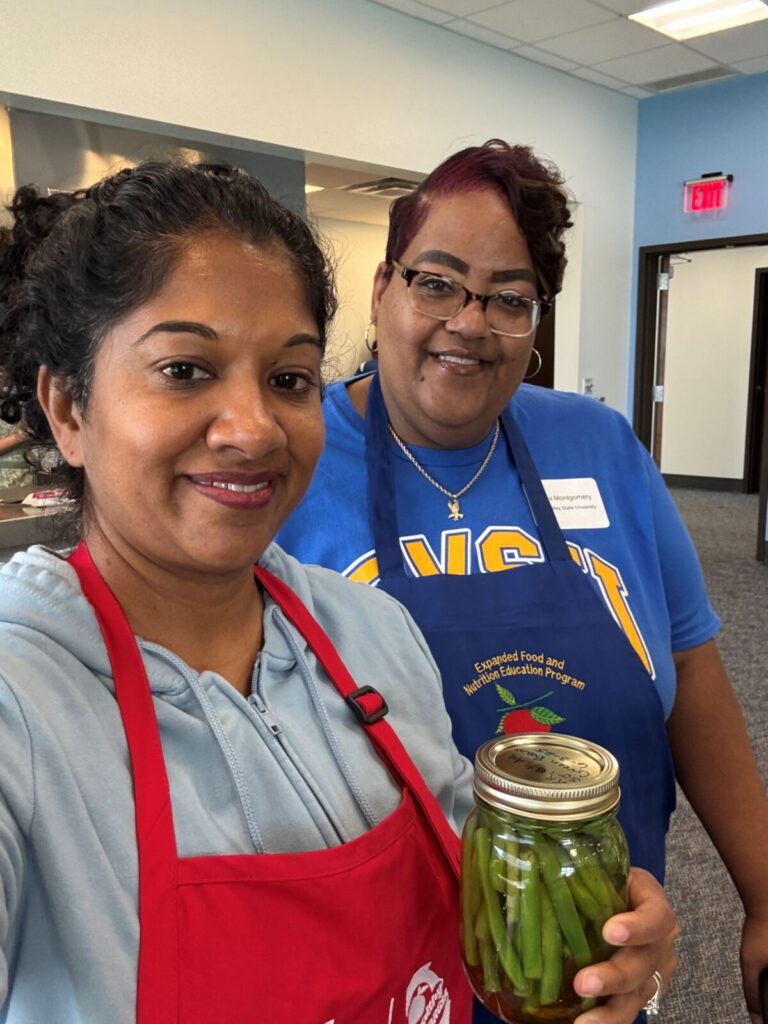
Dr. Roshan Ramlal, PhD MPH, FACS Agent, UGA Extension Forsyth County
Relishes and pickles are a great way to enjoy the bountiful array of fruits and vegetables long after the summer growing season is over.
Pickled products are not just for cucumbers anymore and add a tang of flavor to meals and snacks. Peaches, chow-chow, okra, hot peppers, and green beans can be pickled for a delightful addition to any meal. Spiced apples, muscadines, and crabapples and corn, pepper and pears can be used to make relishes. Quick-process pickled fruits and vegetables are easy to make, and the many spice, sugar, and vinegar combinations create a crisp, firm texture and a tangy flavor, a sweet-and-sour tasty condiment alongside any meal or snack.
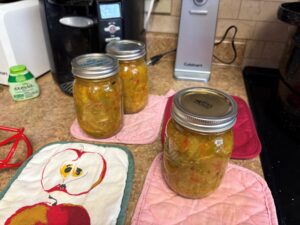
Talent in the kitchen is not a requirement for pickling. Slowing down and having time and patience are necessary. It is about enjoying the journey with a healthy and mouth-filling pleasure at the destination. Many have a story or a memory from childhood of experiencing pickling, making jams and jellies, or canning with a grandparent. A schoolteacher in southern California, for instance, recalls, “We used to pick apricots so my grandmother could make apricot jam.” I also spoke with a caterer who described his father’s farm in North Carolina. “He has a huge storage area with tons of pickles and canned vegetables,” he told me, adding that he is now teaching his granddaughter about the culinary tradition. The memories and stories around home food preservation reveal a part of American culture, coast-to-coast, that I had never heard about before, most likely because my grandparents are from India, where the word “pickle” refers to a spicy cayenne and oil-based condiment.
I was recently trained by Dr. Carla Schwan, University of Georgia Extension’s Food Safety Specialist, and Kris Ingmundson, the Assistant Food Safety and Preservation Coordinator working with the National Center for Home Food Preservation, where she supports Extension programming for home canning and other home food preservation methods on how to preserve fruits and vegetables safely. Preservation methods were much simpler than I imagined. You don’t have to be a Master Chef. Just follow simple safety best practices for delicious, pickled products the same way Americans in rural America have been doing it for generations.
Pickled products fall under for general categories:1) Brined or fermented pickles; 2) Fresh pack or quick process pickles; 3) Fruit pickles; and 4) Relishes.
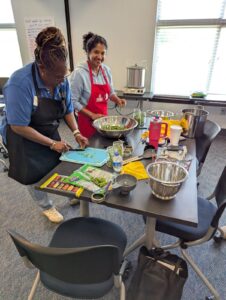
Pickled Product Basics: Ingredients
Fresh produce is very important to the process of pickling. First, make sure to use only good quality, fresh fruits and vegetables. This is especially important because if you do not start with good ingredients, your product will not be as successful. Fresh whole spices are also important in some recipes to give good flavor and prevent darkening of the pickled product.
Salt is an integral part of many pickling processes and flavor twists. Canning or pickling salt that does not contain iodine or non-caking material is ideal.
Use apple cider or white distilled vinegar, but the pickles may taste best with the recommended type in the recipe. Apple cider vinegar is milder and offers a different flavor note than white distilled vinegar. Any vinegar for University of Georgia recipes should be at least five percent acetic acid (50 grain).
Use white sugar unless the recipe calls for brown. Use fresh whole spices for the best quality and flavor in pickles.
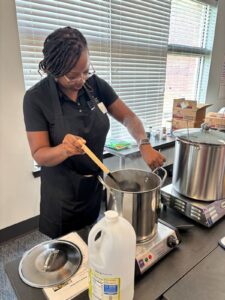
Pickled Product Food Safety Recommendations
Read every recipe carefully. There is a reason for each step, and cutting corners may compromise the quality of the product or make it unsafe to eat. Make sure that each recipe used is modern, up-to-date, and kitchen-tested and that all pickled products to be stored out of the refrigerator are processed in a boiling water canner for the recommended length of time.
Pickles and relishes are high acid products. The acid comes from the large amount of vinegar added to them, or from the fermentation process. Because they are high acid foods, they are processed using the boiling water bath method. Processing is necessary for all pickles and relishes to destroy the yeasts, molds, and bacteria that make people sick and it improves the texture and flavor while giving a brighter color to the product.
Stainless steel, glass, or unchipped metal pans should be used when heating liquids. Aluminum can be used if the brine only be in it a short time. Some metals such as copper and brass can react with acids or salts to create discoloration or undesirable compounds.
Finally, make sure to store finished canned pickles in a cool, dark place, because heat and light may reduce color and quality. Following these simple guidelines will ensure a higher chance that pickling will be successful.
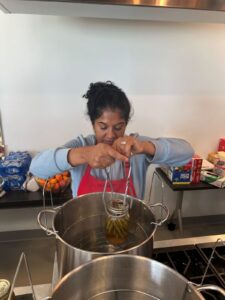
Additional details on how to pickle safely and many tested, safe pickle recipes can be found in So Easy to Preserve, a book available from the University of Georgia Extension Service ($35). The recipe book and many free recipes tested at the University of Georgia can be found on the National Center for Home Food Preservation website: nchfp.uga.edu. If you have questions about home food preservation methods, you can complete the form on the website or you can call me at the Forsyth County Extension office 770-887-2418. If you have a story or memory about canning or pickling or would like to know about upcoming classes, I’d like to hear from you. You can also follow us on Facebook (UGA Extension Forsyth County) or Instagram (focoextension).
Acknowledgments to Elizabeth Andress, PhD for her contribution to the original version of this publication.